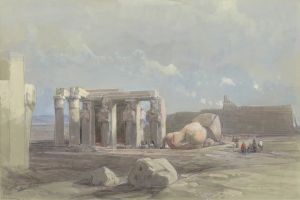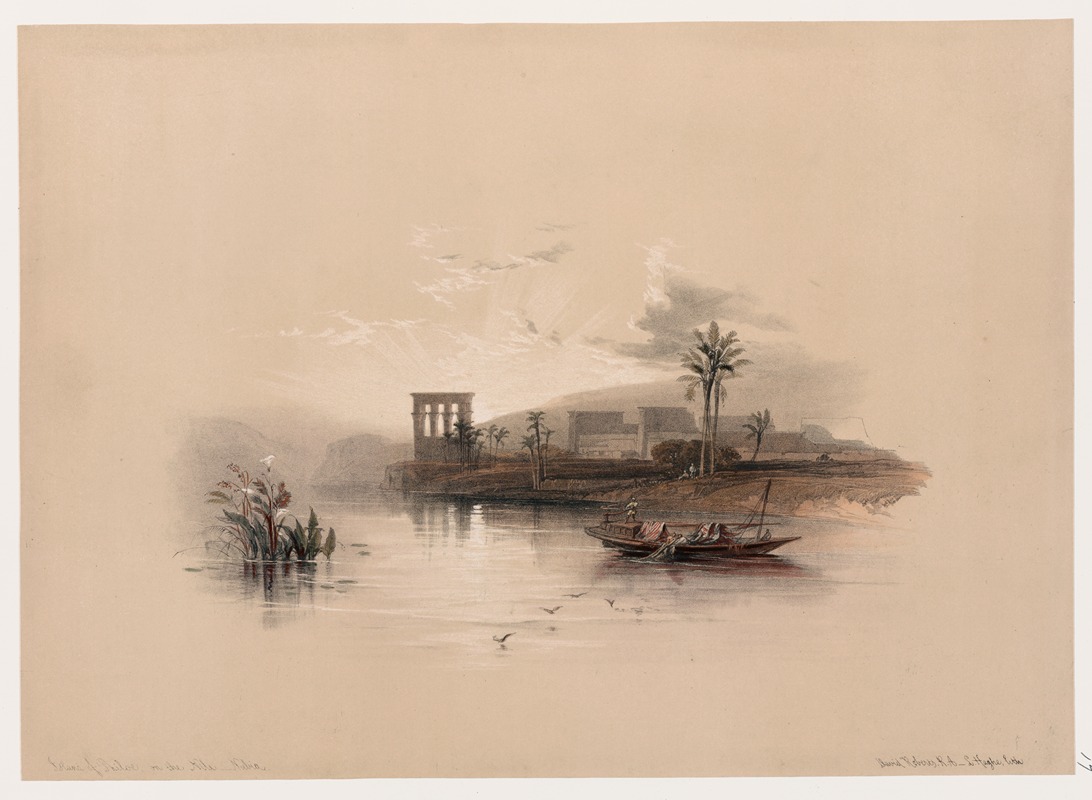
Island of Philæ on the Nile, Nubia.
A hand-painted replica of David Roberts’s masterpiece Island of Philæ on the Nile, Nubia., meticulously crafted by professional artists to capture the true essence of the original. Each piece is created with museum-quality canvas and rare mineral pigments, carefully painted by experienced artists with delicate brushstrokes and rich, layered colors to perfectly recreate the texture of the original artwork. Unlike machine-printed reproductions, this hand-painted version brings the painting to life, infused with the artist’s emotions and skill in every stroke. Whether for personal collection or home decoration, it instantly elevates the artistic atmosphere of any space.
"Island of Philæ on the Nile, Nubia" is a painting by the Scottish artist David Roberts, created in 1838. Roberts, renowned for his detailed and romanticized depictions of Middle Eastern and North African landscapes, completed this work during his extensive travels in the region. The painting is part of his larger body of work that documented the architecture, monuments, and landscapes of Egypt and Nubia, which were later published as lithographs in the acclaimed series The Holy Land, Syria, Idumea, Arabia, Egypt, and Nubia.
The artwork portrays the island of Philae, located in the Nile River in southern Egypt, near the border with modern-day Sudan. Philae was historically significant as a religious center dedicated to the goddess Isis during the Ptolemaic and Roman periods. The island was home to a complex of temples and other structures, including the Temple of Isis, which was one of the last active centers of ancient Egyptian religion before the spread of Christianity.
Roberts' painting captures the island's striking natural and architectural beauty, with the temples prominently featured against the backdrop of the Nile and surrounding desert landscape. His work is noted for its attention to detail and vibrant use of color, which helped convey the grandeur and mystique of the ancient site to European audiences. The painting reflects the 19th-century fascination with Egyptology and the rediscovery of ancient Egyptian culture.
During Roberts' time, the island of Philae was still largely intact, though it faced periodic flooding due to the construction of the first Aswan Dam in the early 20th century. In the 1960s, as part of the UNESCO Nubia Campaign to save monuments threatened by the construction of the Aswan High Dam, the temples on Philae were relocated to the nearby island of Agilkia. This effort preserved the historical and cultural significance of the site, which remains a popular tourist destination today.
David Roberts' works, including "Island of Philæ on the Nile, Nubia," played a significant role in shaping Western perceptions of the Middle East and North Africa during the 19th century. His paintings and lithographs continue to be valued for their artistic merit and historical documentation of sites that have since undergone significant changes.





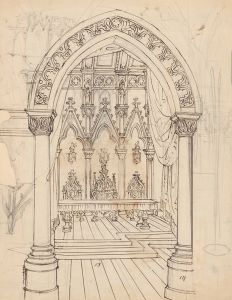
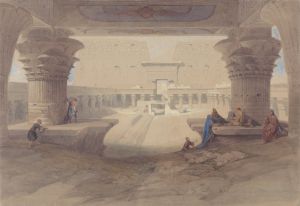
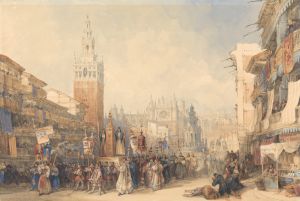
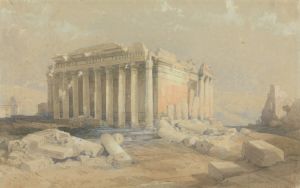
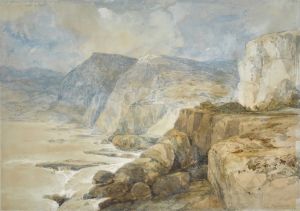
![Colossus in front of Temple of Wady Saboua [Wadi al-Sabua], Nubia.](/imgs/217471/s/david-roberts-colossus-in-front-of-temple-of-wady-saboua-wadi-alsabua-nubia-503a97c9.jpg)
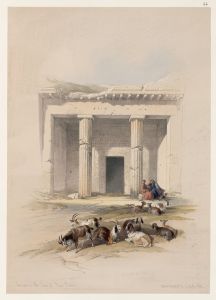
![Interior of the mosque of the Metwalys [Metwalis].](/imgs/217497/s/david-roberts-interior-of-the-mosque-of-the-metwalys-metwalis-d41ed7bd.jpg)
![Karnac [Karnak]. Nov. 29th, 1838.](/imgs/217502/s/david-roberts-karnac-karnak-nov-29th-1838-8df2346d.jpg)
![Karnac [Karnak]. Nov. 29th, 1838](/imgs/217503/s/david-roberts-karnac-karnak-nov-29th-1838-5a10b435.jpg)
![Temple of Kalabshee [Kalabsha, Kalâbishah], Nubia. Nov. 1838.](/imgs/217548/s/david-roberts-temple-of-kalabshee-kalabsha-kalabishah-nubia-nov-1838-be0ac440.jpg)
